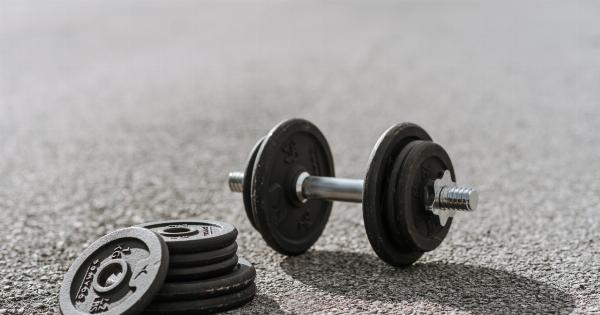Physical activity is necessary for good health and it plays an essential role in maintaining a healthy heart.
According to the American Heart Association, regular physical activity can reduce the risk of heart disease, stroke, type 2 diabetes, and obesity. However, not all physical activity is the same when it comes to improving heart health.
So, what type of physical activity is optimal for heart health? In this article, we will explore the different types of physical activity and their impact on heart health.
Aerobic Exercise
Aerobic exercise is one of the best forms of physical activity for our heart. It is any type of exercise that raises the heart rate and increases cardiovascular endurance. Examples of aerobic exercise include jogging, cycling, swimming, and dancing.
Regular aerobic exercise can lower blood pressure, reduce the risk of heart disease, and improve cholesterol levels. The American Heart Association recommends at least 150 minutes of moderate-intensity aerobic activity or 75 minutes of vigorous-intensity aerobic activity per week for adults.
Strength Training
Strength training involves exercises that use resistance to build muscular strength and endurance. Examples of strength training exercises include push-ups, squats, and weightlifting.
Strength training can improve heart health by reducing blood pressure, improving cholesterol levels, and increasing the body’s ability to use oxygen. The American Heart Association recommends at least two days of strength training per week.
High-Intensity Interval Training (HIIT)
HIIT involves short bursts of intense activities followed by periods of rest or low-intensity exercise. HIIT can be done with any type of exercise, such as cycling, running, or weightlifting.
HIIT has been shown to improve cardiovascular health by reducing blood pressure, improving cholesterol levels, and reducing inflammation. However, HIIT may not be suitable for everyone, especially those with existing heart conditions.
Yoga
Yoga is a mind-body practice that involves physical postures, breathing techniques, and meditation. While yoga may not be as intense as other forms of physical activity, it has numerous benefits for heart health.
Yoga can improve blood pressure, reduce stress, and improve overall cardiovascular health. Additionally, yoga has been shown to help with weight management, which is important for heart health.
Swimming
Swimming is a low-impact exercise that is great for people who have joint problems or injuries. Swimming can improve heart health by increasing cardiovascular endurance and improving oxygen uptake.
Swimming also provides a full-body workout, which can help with weight management. The American Heart Association recommends at least 150 minutes of moderate-intensity aerobic activity or 75 minutes of vigorous-intensity aerobic activity per week, and swimming is a great option for meeting this recommendation.
Dancing
Dancing is a fun and engaging form of physical activity that can be done alone or with others. Dancing can improve cardiovascular health by increasing heart rate and improving blood flow.
Dancing also helps with weight management, balance, and coordination, all of which are important for overall health and well-being. The American Heart Association recommends at least 150 minutes of moderate-intensity aerobic activity or 75 minutes of vigorous-intensity aerobic activity per week, and dancing can be a great way to meet this recommendation.
Walking
Walking is one of the easiest and most accessible forms of physical activity. It is low-impact and can be done almost anywhere at any time.
Walking can improve heart health by reducing blood pressure, improving cholesterol levels, and helping with weight management. The American Heart Association recommends at least 150 minutes of moderate-intensity aerobic activity or 75 minutes of vigorous-intensity aerobic activity per week, and walking is a great option for meeting this recommendation.
Cycling
Cycling is a low-impact exercise that can be done indoors or outdoors. Cycling can improve cardiovascular health by increasing heart rate and improving blood flow. It also provides a low-impact workout, which is great for joint health.
Additionally, cycling can be done alone or with others, making it a versatile form of physical activity. The American Heart Association recommends at least 150 minutes of moderate-intensity aerobic activity or 75 minutes of vigorous-intensity aerobic activity per week, and cycling is a great option for meeting this recommendation.
Team Sports
Playing team sports, such as basketball, soccer, or volleyball, can be a fun and engaging way to get regular physical activity. Team sports can improve cardiovascular health by increasing heart rate and improving blood flow.
They also provide a sense of community and social support, which is important for overall health and well-being. The American Heart Association recommends at least 150 minutes of moderate-intensity aerobic activity or 75 minutes of vigorous-intensity aerobic activity per week, and team sports can be a great way to meet this recommendation.
Conclusion
There are many different types of physical activity that can improve heart health. Aerobic exercise, strength training, HIIT, yoga, swimming, dancing, walking, cycling, and team sports are all great options.
The key is to find an activity that you enjoy and can do regularly.
The American Heart Association recommends at least 150 minutes of moderate-intensity aerobic activity or 75 minutes of vigorous-intensity aerobic activity per week, and incorporating physical activity into your daily routine can help improve heart health and overall well-being.






























